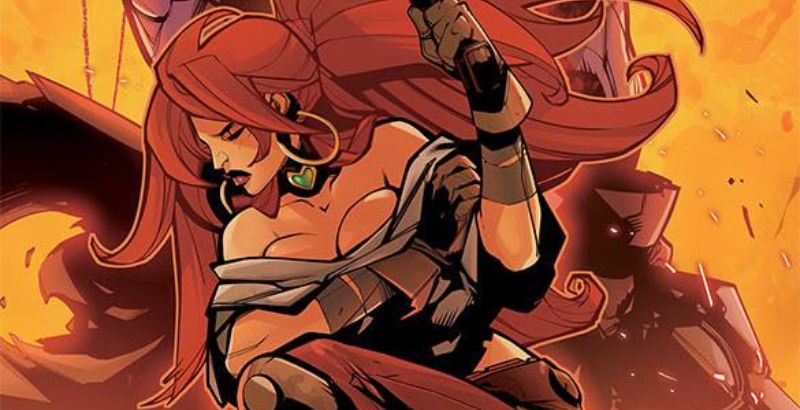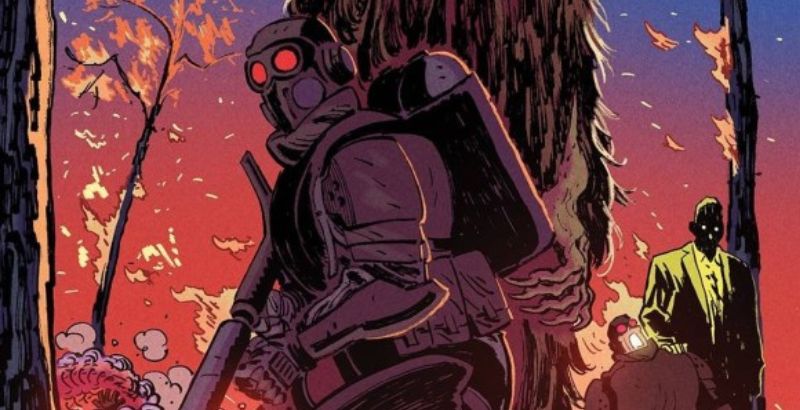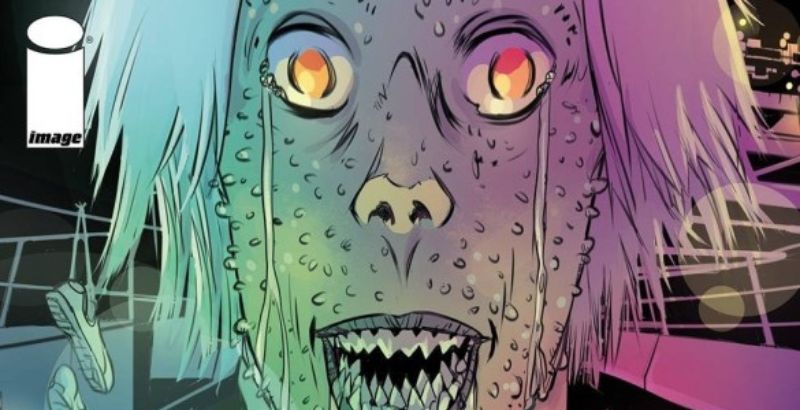
Graphic Fantasy #2 is published by Image Comics and is written, illustrated, and lettered by Eric Larsen. Some time has passed since Paul Dragon’s confrontation with Bronze Man, and his retirement seems to be settling down nicely. His little girl is growing, and he has found a partner to help him move on with his life. But the world is falling into peril. Something insidious seems to be driving people to kill themselves. The Society of Super-Heroes(S.O.S.) fears the Possessor has returned. And there is only one person who is immune to his powerful mind control abilities. The Society needs The Dragon back.
Just as Graphic Fantasy #1 highlighted for me how much the art and writing in superhero comics has changed over the decades, Graphic Fantasy #2 takes this experience a step further with the presence of Dragon’s new girlfriend, Marcy. She is introduced as a partner and support for our protagonist. But in actuality, she proves to be nothing but a hurdle. She is supposed to care about Dragon, yet she is dead set against him returning to hero work. And her manner of expressing this comes across as selfish, to say the least.
Being the daughter of a cop that didn’t come home one night, Marcy can be forgiven for being hesitant about her love putting himself in harm’s way. The thing that makes this book’s approach to Marcy’s attitude in this story is how she comes off as wholly manipulative in her arguments. More than once in their discussions, she clarifies that the choice Dragon faces is her or the job. Without even a word of understanding sent his way.
In contradiction to this, most modern scenarios would portray the concerned partner as slightly understanding. A moment where they would say something like, “I know this is something you have to do, but I just can’t handle that life.”. Removing the concerned girlfriend from being an obstacle to the hero’s journey and allowing her to be supportive of him while also taking care of her own mental health. The greater depth these supporting cast members have grown into over the decades is another example of how far comics have come.
Just as its approach to its supporting cast is clunky and awkward, so is Graphic Fantasy #2’s overall story. As the suicide rate skyrockets across the country, the S.O.S. determines that the villain The Possessor is back, and only The Dragon can stop him. But Dragon proves to be no easy sell on the idea.
Numerous, supremely long conversations and internal monologues explore Dragon’s struggle with returning to his old life. Everything said in these dialogue moments takes at least twice as long as it feels like it should. This gives the story a huge word count, despite not expressing much actual meaning.
When Graphic Fantasy #2 gets to its action, the result is far more efficient but lacks any real clarity of what transpires in many panels. This feels largely due to the story’s desire to show lots of different action moments by removing the less exciting but equally important connective tissue that gets the fight from one point to another. This leaves the story’s fight scene as a long sequence of punches, with little context to who is punching or how they got to where they are.
Except for its big fight sequence, Graphic Fantasy #2’s art delivers a generally clear, if basic, presentation. There are many overly dramatic angles and more than a few frames where characters are awkwardly poking their heads into panels, making some moments that are clearly intended to be dramatic come off as a bit comical instead.
The lettering here falls substantially below what would be considered industry standards. But to be fair, it also is fairly obvious that the letters present were done by hand. Which, when one considers that, it feels like a fairly respectable job, really.
So, in the end, Graphic Fantasy #2 delivers a tale that I’m sure long time fans of Paul Dragon may want to fill a hole in their collections. For most, however, unless you are simply looking for an example of where comics were 40 years ago, there are better options on the market.
Graphic Fantasy #2 is available now wherever comics are sold.
Graphic Fantasy #2
TL;DR
So, in the end, Graphic Fantasy #2 delivers a tale that I’m sure long time fans of Paul Dragon may want to fill a hole in their collections. For most, however, unless you are simply looking for an example of where comics were 40 years ago, there are better options on the market.







